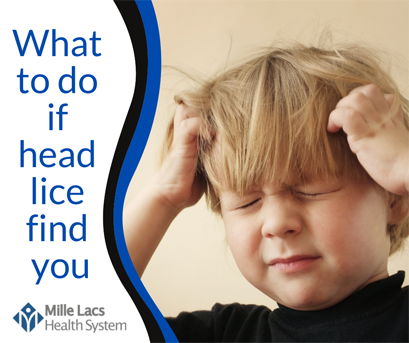Be prepared if head lice finds you
October 13, 2022
According to the CDC, somewhere between six million and twelve million U.S. children between the ages of three and eleven years old are affected with head lice every year. The number of cases typically peaks during the back-to-school time and again after the holidays. Yes, if one family member brings it home, it can easily spread throughout the rest of the household.
Head lice are typically discovered after a person experiences excessive itchiness. The itchiness or irritation is caused by the lice biting and feeding on the host’s blood. There can also be a sensation of tingling with the hairs moving from the movement of lice. A rash along the hairline can also be common. Lice prefer the areas behind the ears, and the base of the hairline along the neck. Lice are also most active at night, so irritations will likely increase later in the day.
To check for head lice or nits, start by parting the hair in several spots. Use a magnifying glass and a bright light to help spot them. Lice don’t fly or jump, but they do move quickly and avoid light. Adult lice will be the “larger” (about the size of a sesame seed) tan or white fast-moving “bugs”, and nits or eggs are typically small white specks attached to the hair near the scalp. A common misconception is lice like dirty and oily environments. On the contrary, oily hair is harder to attach to, so they prefer cleaner hair.
If lice are spotted, visit your local pharmacy or consult with your medical provider about which treatment is best for you. There are a variety of over-the-counter and prescription treatments to kill lice such as shampoos, cream rinses, and lotions. A special fine tooth comb is also an important tool in helping remove the lice and nits.
In addition to treatment on the infected head, you’ll want to wash and dry on high heat all clothing, hats, bedding, blankets, towels, and uniforms recently worn. Fabric items that are not able to be laundered can be sealed in a plastic bag and left for two weeks, freezing them helps as well. Disinfect combs and brushes used by a person with head lice by soaking them in hot water (at least 130°F) for five to ten minutes. Finally, thoroughly vacuum the floor and furniture in your home.
To prevent head lice from finding your family practice these steps: do not share items such as brushes, hats, or headphones. Avoid head-to-head contact when playing or working closely with others. Tie back long hair in a ponytail to keep it from brushing up on others.
